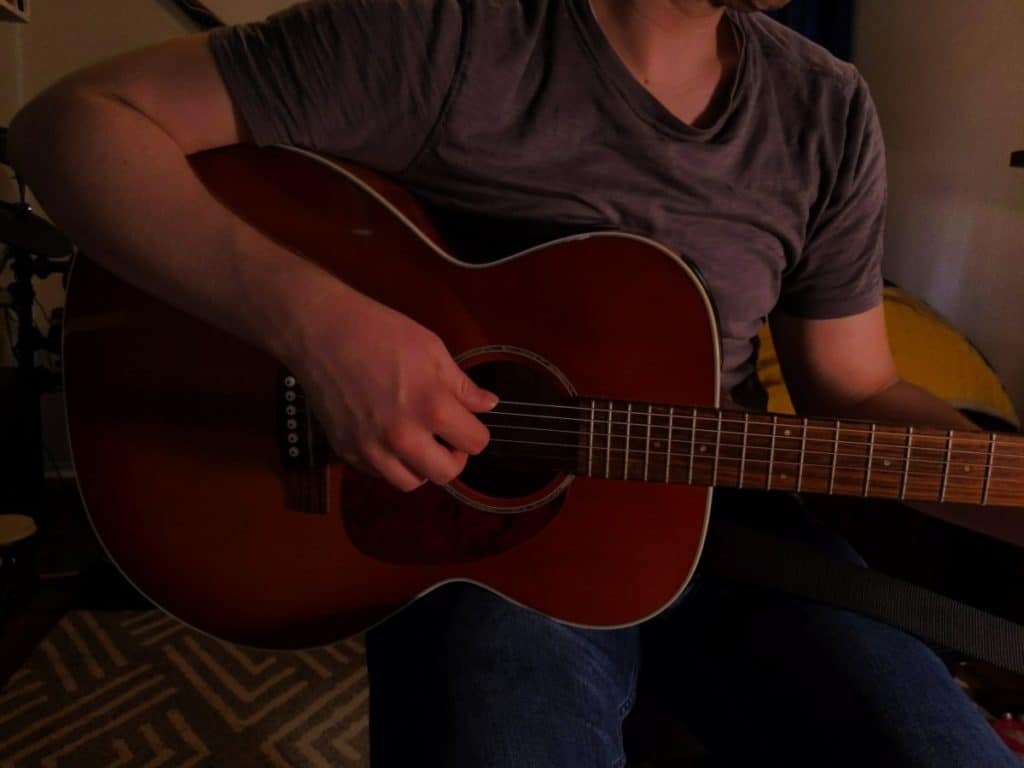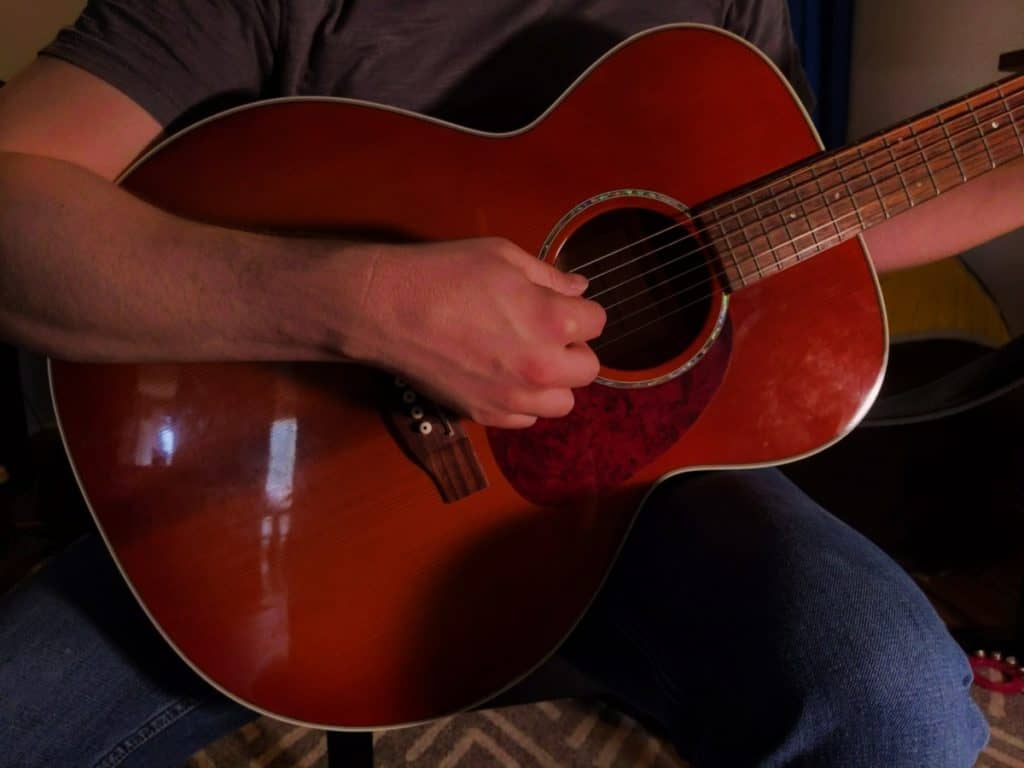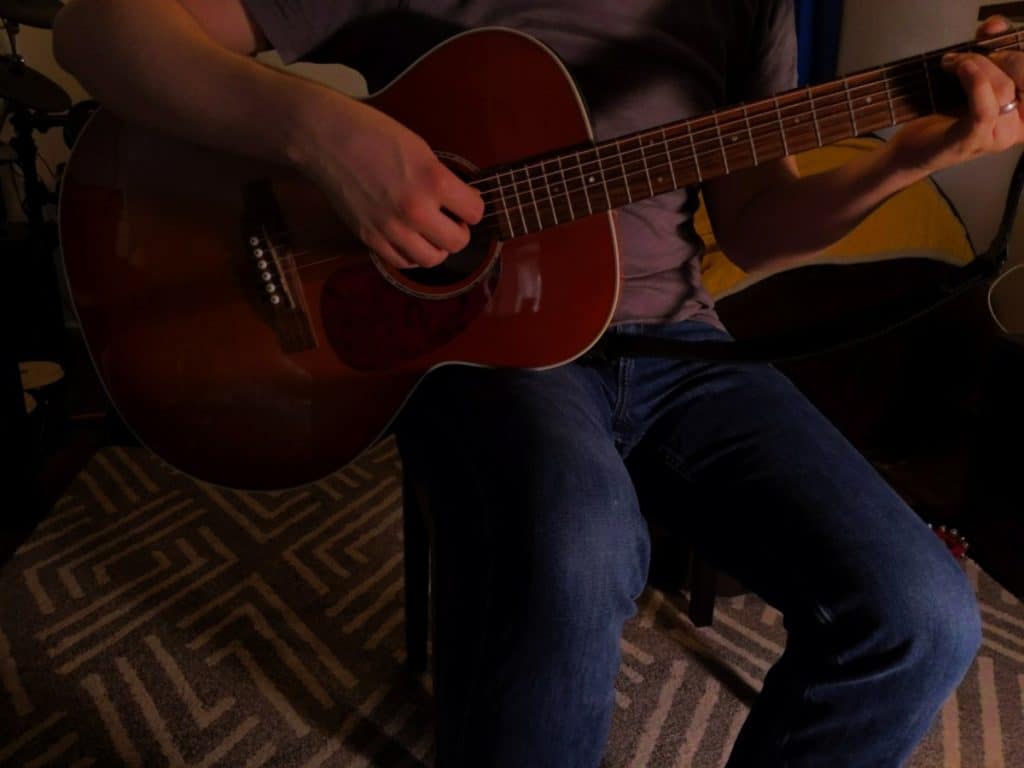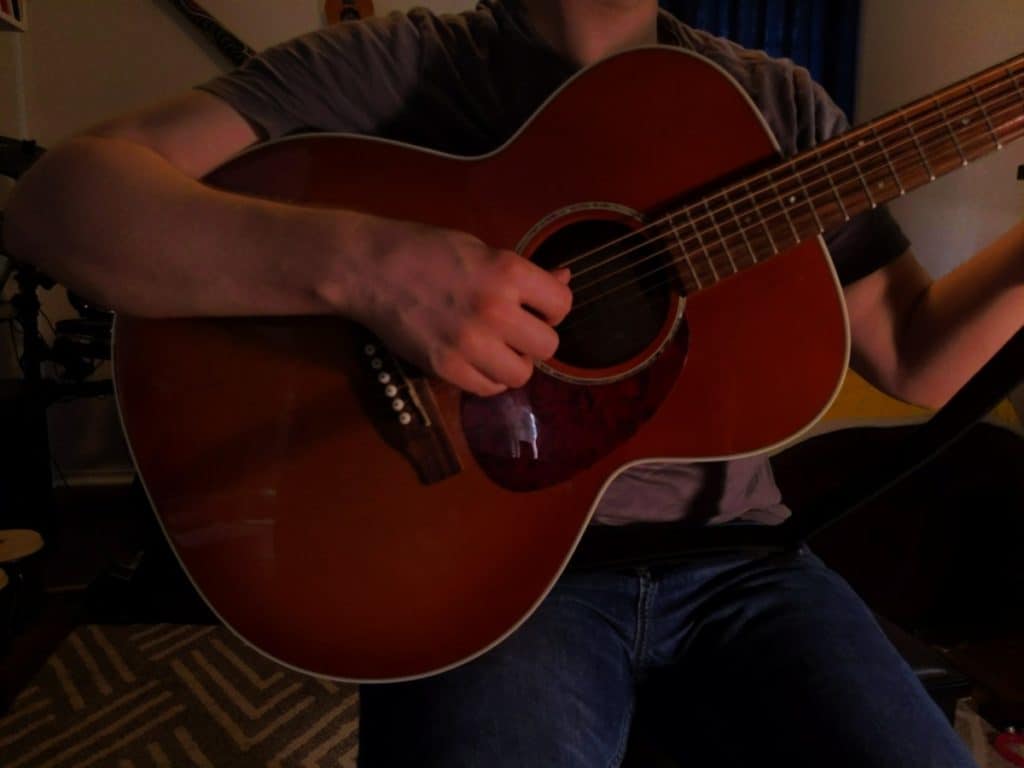This post contains affiliate links. We earn commissions if you purchase products from retailers after clicking on a link from our site. As an Amazon Associate, we earn from qualifying purchases.
Previous to writing this article I was only vaguely aware of guitar footrests and didn’t think much about it. As I’ve recently decided to practice the guitar more I wanted to improve my ergonomic position in playing the guitar and decided to do some research.
Should You Use a Guitar Foot Stool? The purpose of the guitar footstool is to promote a straight back, even shoulders and straight wrists. Many guitarists find a significant benefit with the footrest, but some guitarists experience additional back pain.
So is there no hope in finding the perfect ergonomic posture for playing guitar? Well, luckily there are some things you can test before you go buy a footrest or some other guitar support. I’ll share the results of my research with you and by the end you’ll have some solid places to start.
(by the way, I’ll be using the term guitar footrests and guitar footstools interchangeably)
Don’t Buy, Try
Before we get started, I wanted to give you a little tip to save you some money. These mechanical devices are extremely simple. You don’t have to purchase one before improvising with a substitute.
Practice with a substitute for a few hours and see if you can feel a difference–that should give you enough information to know if a particular ergo device will help you or not.
Why Use a Guitar Footrest?
The purpose of the guitar footrest is to promote a better posture in the following areas:
- Lower back
- Upper back and shoulders
- Wrists
If you’re playing the guitar in classical position, you have the guitar between legs with the neck pointed diagonally away from you at roughly a 45 degree angle from your body.
If your feet are level, then the bottom of the guitar is pushing against the inside of your right thigh, but it is difficult to hold up in this position, so you end up holding some of the weight of the guitar with your left hand–which makes playing really difficult.
When you use a footrest, your guitar can comfortably sit against your leg, held in place with your right arm, with the bottom of the guitar pressing into your right thigh.
Alternative Postures That Can Hurt Your Back That the Footrest Helps With
I’m the first to say… I have really bad posture and I get that it sometimes is much more uncomfortable to have “good” posture–but I did want to mention what can happen without any work on posture for holding the guitar
Resting the Guitar on your Right leg
Probably the most infamous posture adopted by thousands of guitarists is the “slackers position.” Where the guitar neck is parallel to the ground, with the guitar’s nook (the center curve of the guitar) resting on your right thigh.

By the way, looking for recording equipment and musical instruments? Check out Sweetwater.com for microphones, monitors, audio interface or any other recording gear that you could ever need. (Affiliate Link)
By the way, looking for a guitar? Check out GuitarCenter.com for acoustic, electric, or classical guitars as well as all the guitar gear you could ever need. (Affiliate Link)
This position, I admit, works for a lot of people and you learn quite a bit with it, but there are some downsides:
- It’s really easy to hunch over the guitar to see the neck: Since this position is pretty relaxed, it’s pretty easy to transition from a straight back to back that’s hunched over
- Cuts off circulation in your right arm: Your right arm is doing a fair amount of effort to keep the guitar in place and so you may experience (like I do) a loss of circulation
- Slippery slope posture: Because this is a natural and intuitive position to be in, it often can go from bad to worse.
I’ll stand up and say I’m guilty of using this posture. I’m trying to do better… that’s why I’m researching this topic.
Adopting a posture with a footrest can take off the pressure from your right arm and angles your leg so it can bring your guitar up to you without you having to hunch down.
How To Use a Guitar Footrest
There are actually multiple ways to use a footrest. I really loved the video from guitarblogupdate which talks about two different methods for using a guitar footrest:
The most commonly accepted method is to use the footrest under your left foot as I described before, with the guitar nook resting on your left leg.

This is known to many as the classical position.
Footrest Under the Right Foot
However, there is an alternate approach where the footrest is used under your right foot, with the guitar resting on your right leg. Although perhaps not as theoretically ideal, this helps prevent the slouching problem and is probably more of a comfortable position for someone who is used to having the sound hole of the guitar centered on their right thigh.

You can see from my picture that posture isn’t perfect, my right wrist is twisted somewhat and not completely straight.
Disadvantages Of Using a Guitar Footrest
It’s not all roses, unfortunately when it comes to guitar footrests.
Some guitarists attribute long hours practicing with uneven hips from a footrest has contributed to lower back problems.
This makes absolute sense.. . if your hips are uneven (such as if your foot is on a footstool), your body will adjust to the position, and some muscles that are weaker will become stronger and vice versa.
The problem is that if your muscles are imbalanced that you can experience back problems because of the way your core muscles support your spine.
Another example of uneven hips is when guitarists play with crossed legs. The Journal of Korean Society of Physical Medicine published a paper that showed that crossing your legs for an extended period of time can affect your core muscles. (source)
Naturally, there are ways to help your health outside of just guitar playing that can influence what happens to you, personally.
From my research, I found, anecdotally, that several players have never had any back issues while practicing for decades with the guitar. Every body is different, listen to your’s and see if a footstool helps more than it affects your negatively.
Other Disadvantages of Guitar Footrests
Besides the potential for causing back issues, there are a couple minor downsides:
Heavy and Bulky
Some people dislike guitar footrests because of their weight and additional space they take up–these probably won’t fit in your guitar case, for example.
The average weight for a guitar footrest is around 1.25 to 1.5 lbs, so it’s not super heavy, but it’s something to be aware of.
Singing
Another minor inconvenience is that the footrest is causing your core muscles to flex in a different way which may interrupt your singing. I think this is probably very negligible but I found one guitarist who felt that the footrest was making a difference in their singing.
Looking Cool With a Footrest
I wanted to mention this because I know I’ve been sucked into this trap of not thinking that the playing position for classical guitar as cool. It’s true that the sloucher’s position has some widespread coolness appeal and it’s hard to shake. But, one secret is that you don’t have to necessarily perform with a footrest–but if practicing with one will save your back then it’s worth it.
Alternatives to Using a Guitar Foot Stool
I don’t want to give the impression that I think a guitar footrest is a bad idea–I really think they can help a lot and they are probably a lot better than the natural sloucher’s position, and the slippery slope that posture entails.
Guitar Support
A popular alternative to footrests is to use a guitar support.
A guitar support gives you a place to rest the guitar and raise the neck of the guitar without having to lift the neck with your left hand.
There are a couple different models and designs.
The following is an example of how a guitar support would work.
If you have the guitar in the center of your body in the classical position, a guitar support can be used to sit in between your left leg and the side of the guitar. Thus, your guitar is resting on your guitar support, while the guitar support is propped up on your left thigh.
Neckup
Neckup sells a guitar support in a couple different models:
One model is specifically designed to be used for players in the classical position (the guitar between the legs). The purpose of the footrest was to raise your leg so it could support the guitar in its elevated position. With the neckup, you can keep your left foot on the floor with your hips even, and still elevate the neck of the guitar. You can see what it looks like here on their website.
Neckup sells another model where the guitar is intended to sit on your right leg with a prop so the neck is still elevated–this accommodates many guitar players who find this position more comfortable. You can see how it works here at their website.
Dynarette
Dynarette approaches this same concept with another design: a specially-shaped cushion made from a dense foam. An excellent option that is less obtrusive, visually, than the Neckup. You can check it out on Amazon, here.
Strap
Another option other buying a special prop device is to use your guitar strap (I guess if you didn’t have a strap you’d have to buy one).
The idea is to set up your guitar strap to play in the same position you would if you were standing. This allows you to adjust and support the guitar propped up as you want.
One downside to the strap is that you are applying pressure on your neck and shoulders. Any repetitive strain can cause pain to your body.
Adjust Playing Position
The last alternative is probably the most difficult, and that is to adjust your playing position without any device. Some players choose to prop the guitar on their right thigh and angle it and brace the guitar with their right arm–elevating the guitar neck, without putting weight on their left hand.

It’s difficult to do because playing the guitar requires focus and it’s very easy to forget the position your body is in. If you can figure out your own ergonomic position that keeps your wrists straight, neck, shoulders, and back in line and straight without stressing anything, then you are now independent from any support and you’re good to play anywhere!
